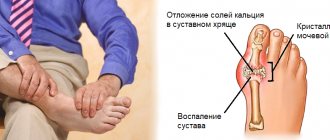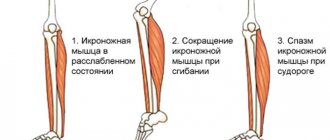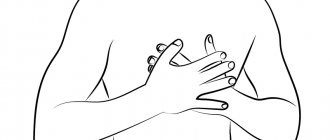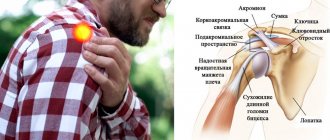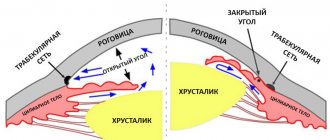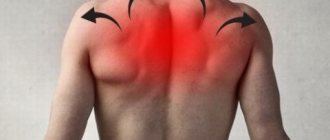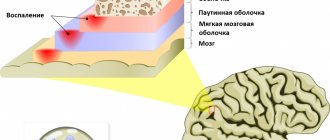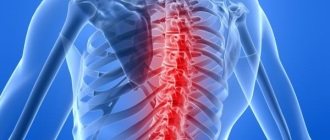The leg (lower limb) is made up of muscles, skin, bones, joints and other structures. All of them are permeated with nerve fibers and contain pain receptors - any structure can become a source of pain.
In a healthy person, pain in the legs can be associated with physical activity or an uncomfortable body position - for example, with prolonged standing. In women, in addition, it occurs during pregnancy and when using certain oral contraceptives. We will not dwell on this - we will consider only cases of pain caused by disorders in the body.
Pain in the legs, not directly related to vascular damage, occurs with many diseases:
- injuries;
- radiculitis, sciatica, neuritis, diabetic polyneuropathy, tunnel syndromes;
- inflammatory diseases (myositis, arthritis, osteomyelitis, tenosynovitis, phlegmon, erysipelas, etc.);
- degenerative-dystrophic processes (arthrosis, flat feet, etc.);
- violation of water-salt metabolism.
An angiologist surgeon needs to be able to distinguish these conditions from pain associated with vascular changes in the extremities, since most people, when pain occurs, do not know which doctor to turn to for help. It is vascular changes in the lower extremities that often occur and bring the greatest suffering to patients; they require a particularly careful approach to diagnosis and treatment.
In medical practice, various names for the same vascular disorders are used. In order not to confuse the reader, we will adhere to the designations adopted by the International Classification of Diseases ICD-10
Vascular diseases of the legs are divided into diseases of the arteries, veins and lymphatic vessels.
Find out more about the promotion >>>
1.Pain in legs
Almost all people at some point in time experience problems with their legs - pain in the legs, pain in the feet, toes, ankles and other unpleasant sensations.
Why is this happening? In fact, there can be many reasons. Most of the time, our body movements do not cause any problems. But due to daily or too intense stress, a variety of leg diseases can develop. In addition, injuries and the natural aging process can cause discomfort and pain in the legs.
Your toes, feet, and ankles may experience burning, pain, fatigue, numbness, tingling, warmth, or coldness
.
muscle spasms
occur in the legs, especially at night when you sleep, and swelling of the legs.
The feet and ankles may become discolored, pale, or blue
.
There may be an unpleasant odor from your feet
.
Some of these symptoms are normal for older people or pregnant women. In this case, treatment at home is usually sufficient. In other situations, you need to find the cause of the problem and treat it.
Bemer therapy is a modern way to combat all types of pain. You can read more about Swiss physiotherapy in this section
Sign up for a consultation
A must read! Help with treatment and hospitalization!
Why do my feet hurt?
Experts consider many reasons that can cause pain. For example, if the foot hurts achingly, this may be due to overexertion and heavy load endured, perhaps due to wearing tight shoes with heels. Baths, massages, changing shoes to more comfortable ones, and reducing the load on your feet will help here.
A much more serious danger is posed by injuries, infectious, systemic and inflammatory diseases, and various deformities. For example, with flat feet, the arch of the foot disappears, and instead of a natural arch, a person gets an almost smooth foot. This leads to a change in the location of the internal bones, compression of nerves and blood vessels.
Another disease of the deforming type is the so-called diabetic foot. Diagnosed in patients with advanced type 1 diabetes. Due to impaired blood flow, the leg in the foot area swells, the person limps, and trophic ulcers appear on the skin. It is urgent to reduce sugar levels and carefully monitor them in the future.
Arthrosis deformans is also a cause of foot pain. With this disease, the fingers lose their natural shape, become like hooks, and move poorly. The person experiences significant problems with walking. One joint is not enough; several joints fail at once.
2.Causes of leg pain
There are several categories of problems that can cause leg pain, discomfort and the other symptoms listed above. Let's try to figure it out in more detail.
Firstly, it may be problems with the skin of the legs
. Symptoms and the diseases that cause them may be:
- If while walking you feel as if you are walking on stones or pebbles, it may be plantar warts on the lower part of your foot;
- Areas of dense and hard skin on the heels may appear due to calluses, blisters on the skin or engorgement of the skin due to uncomfortable shoes, walking barefoot;
- Redness, peeling of the skin, burning and itching between the toes or on the bottom of the leg are signs of foot fungus (mycosis). Another possible cause is dermatitis due to the shoes you wear;
- Red, swollen, and tender skin around the nail may be symptoms of an ingrown toenail or nail infection (paronychia);
- Redness, swelling of the feet, pain in the feet when walking or touching are signs of a possible bacterial infection. You can become infected in public showers, swimming pools and other similar institutions.
The toe joints are a very vulnerable area.
. And it is with the joints of the toes that there are more problems than with any other joints in the body.
- Big toe joint pain, redness, swelling and tenderness that suddenly appears in the big toe joint can be caused by gout. The same symptoms can appear due to infection;
- If you have a swelling or lump at the base of your big toe, it may be a bunion;
- A lump on the outside of the little finger may be due to bunion;
- Toe joint pain, stiffness, and swelling are common symptoms of bunions, arthritis, lupus, or gout.
Foot pain may appear in the front of the foot or in the heel.
- Sharp pain in the bottom of the heel can be caused by plantar fasciitis;
- Pain in the back of the heel or ankle are symptoms of Achilles tendinitis, or as it is also called, Achilles tendinitis;
- Pain that worsens before or after exercise but improves during exercise may be caused by a broken bone in the leg (usually a metatarsal);
- Small bone spurs under the heel bone that cause heel pain may be a heel spur;
- Pain in the midfoot occurs due to flat feet;
- Pain in the back of the heel or a lump in this area is a symptom of a type of bunion.
Many diseases can affect the nerves of the foot
, causing foot pain, numbness, tingling and burning.
- Foot pain, burning, tingling, or numbness between the toes, especially between the third and fourth toes, and the same sensation in the forefoot may occur due to swelling or thickening of the nerve in the forefoot;
- Pain, numbness, or tingling that starts in the back or buttocks and moves down the leg may be caused by sciatica due to a pinched nerve;
- Weakness and pain in the ankle, which is often accompanied by numbness, can begin due to a pinched nerve in the ankle (tarsal tunnel syndrome) or sciatica;
- Burning in the legs, numbness and loss of sensation appear due to poor blood circulation. This problem is more common among people with diabetes or peripheral artery disease.
As you can see, the causes of leg pain, pain in the feet, ankles, toes, and other causes of discomfort in the legs can be very different. Therefore, if you experience symptoms such as pain in the legs, swelling of the legs, cramps in the legs, burning sensation, numbness, tingling in the legs and toes, paleness or blueness of the legs, you need to consult a good doctor. A specialist will help determine the cause of discomfort in the legs and tell you how to deal with them.
Visit our Therapy page
Arteries of the lower extremities
Blood, rich in oxygen and nutrients, is carried from the heart to the rest of the body by arteries. The aorta is the largest artery in your body. There are several sections of the aorta that merge into each other: the ascending aorta, the aortic arch, the descending thoracic aorta and then the abdominal aorta. In the projection of the navel, the abdominal aorta is divided into two iliac arteries, which deliver blood to the lower extremities.
When the arteries in the lower extremities are narrowed or completely blocked, the legs do not receive enough blood, that is, they do not receive the necessary oxygen and nutrients. This condition is called peripheral artery disease, or obliterating atherosclerosis of the arteries of the lower extremities (OALS).
Normally, the arteries are smooth and allow unimpeded blood flow. With age, most often due to the progression of atherosclerosis, the lumen of the arteries can become narrowed or completely blocked. This occurs when atherosclerotic plaques, gradually increasing in the walls of the arteries, create an obstacle to the flow of blood through the vessel. When this happens, your feet don't get the oxygen and nutrients they need. Atherosclerosis is a chronic disease in which cholesterol is deposited in the lumen of the vascular wall with the formation of an atherosclerotic plaque. Atherosclerosis also affects the arteries of the heart, brain, kidneys, mesenteric arteries, etc. Given the tendency to generalize the disease, treatment of obliterating atherosclerosis of the arteries of the legs is necessary not only to improve the quality of life or prevent the loss of a limb, but also to reduce the likelihood of a stroke or heart attack.
3. Treatment of pain in the legs (ankles, feet, toes)
Treating leg pain at home often helps to cope not only with pain, but also with other symptoms - swelling of the legs, cramps, and discomfort. Treatment, as a rule, begins with eliminating the factors that caused pain in the legs.
and other unpleasant sensations.
For example, you should stop exercising at least temporarily if you experience pain in your legs (feet, ankles, or toes) during exercise. Physical activity “through pain” is contraindicated. It is important to wear high-quality and comfortable shoes. Arch supports and other orthopedic devices
will help make walking more comfortable.
Cold application, rest, foot massage, gentle and gentle exercises
(for example, for stretching tendons) will help cope with leg pain, leg swelling or cramps. To relieve leg pain, you can take over-the-counter pain medications.
For swelling of the legs, swelling of the feet and ankles
You can raise your swollen legs just above the level of your heart and sit like that for a while. If you have a sedentary job, get up and walk around for a few minutes every hour. Reduce your salt intake.
If your home treatments for leg pain (feet, ankles, toes), leg swelling, and other problems do not have the desired effect, consult your doctor. Consultation with a specialist is required
and when the pain and swelling intensify, signs of infection appear, the skin turns pale, tingling and numbness appear.
About our clinic Chistye Prudy metro station Medintercom page!
What to do before visiting a doctor.
Do leg exercises regularly, lead a healthy lifestyle, follow a diet and exercise, and visit the pool. It is necessary to wear comfortable shoes with orthopedic insoles, while trying to wear high-heeled shoes or, conversely, ballet flats or sneakers with flat soles as little as possible. In the evening, do a separate contrast shower for your feet - alternating warm and cool water, and place a pillow under your feet at night.
It is certainly necessary to follow these traditional recommendations if your legs ache. However, given the range of possible diseases that can cause this condition, you should not delay visiting a doctor and receiving specialized help.
Ivan Ilyich Kalachev, Ph.D. phlebologist, head of the surgical department of the Clinic of Expert Medical Technologies
4.Bemer therapy
In our medical practice, Bemer therapy has proven to be the most successful way to combat any type of pain. BEMER therapy is electromagnetic physiotherapy from Switzerland, the main goal of which is to improve blood circulation.
The Bemer device consists of three elements: an induction mattress aimed at general health improvement, a reinforced applicator - a device that allows you to influence a specific place, and a laser magnet, which has the strongest effect on the pain point
read more about Bemer therapy by following the link. If you want to get a consultation or make an appointment, you can do this using the feedback form or by phone: +7-495-212-08-85
Sign up for a consultation
Types of inflammation of the joints on the foot
Often the cause of pain in the ankle joint and the foot itself are inflammatory diseases.
The diagnosis of bursitis is made after an X-ray examination. The disease is an inflammation of the joint capsules, which are scientifically called bursae. It should be treated with anti-inflammatory drugs, chondroprotectors, and in difficult cases, even surgically.
Plantar fasciitis is a disease in which the foot becomes swollen and painful. Fascia, a strip of connective tissue, runs from the heel to the toes. It helps with shock absorption while driving. If you put too much stress on your foot, the fascia becomes inflamed. The instep and the side of the leg hurt. The pain syndrome manifests itself most prominently in the morning. There are cases when the fascia loses its elasticity and ossifies, forming a heel spur. She bites into the soft tissue and makes walking, in the literal sense of the word, “through torment.” Those who have experienced this condition describe it as stepping on nails.
Arthritis of the foot
As medical statistics show, arthritis of the foot joints develops with age in every third person on the planet. The impetus for pathology can be a variety of factors, including hereditary predisposition.
Rheumatoid arthritis is one of the most common pathologies that causes disease of the foot joints. The disease is characterized by self-destruction of the body, which begins to accept tissues of cartilage and joints as foreign. All the forces of the immune system are directed towards the destruction of “pathogenic” cells, which leads to the destruction of the joints of the foot and the rapid development of pathology.
Gout occurs when salts are deposited in the joint cavities. The cause of the pathology is dysfunction of uric acid metabolism. Men over 45 years of age are most susceptible to this disease.
Osteoarthritis occurs as a complication of arthritis when joint tissue is destroyed. Both male and female portions of the older population are susceptible to pathology.
Reactive arthritis can be triggered by infectious diseases that cause immune dysfunction.
Diseases that have a post-traumatic, infectious or other etiology, do not always affect the lower limb, but spread throughout the body.
All forms of the disease are based on common symptoms:
- pain in the legs, which varies in nature and intensity;
- swelling of the lower extremities below the knee;
- change in skin color, often redness;
- local increase in temperature;
- reduction in motor function.
Diagnosis and treatment
Due to the significant variety of diseases that lead to painful feet, correct diagnosis is not only important, but can protect a person from disability. recommended
First, the patient sees a specialist, then undergoes an X-ray or tomography. At the same time, they determine the condition of the joints, muscles, ligaments, and what disease led to the appearance of alarming symptoms. Even an excellent specialist, without diagnostics and tests, will not tell you exactly why your feet hurt, what exactly needs to be done and how to treat them.
When the diagnosis is clear, a treatment regimen is prescribed. For example, traumatic factors are eliminated, infections are cured, joints and blood vessels are put in order. It is clear that every disease is treated symptomatically. Unconventional means are usually powerless. They help well with fatigue, but are ineffective for more serious causes of pain.
Fungal diseases
According to medical statistics and epidemiological studies, in Russia the presence of fungal nail disease can be expected in almost every fifth adult. Moreover, the incidence rate has increased 2.5 times over the past 10 years. Infection in 30% of cases occurs in the family, from a relative with foot or nail fungus. Most often, the infection is transmitted through shared shoes, but sometimes through other household items. Infection occurs with equal frequency in public places: baths, showers, gyms and sports halls, swimming pools. As a rule, the skin of the feet is affected first, and then the nails.
